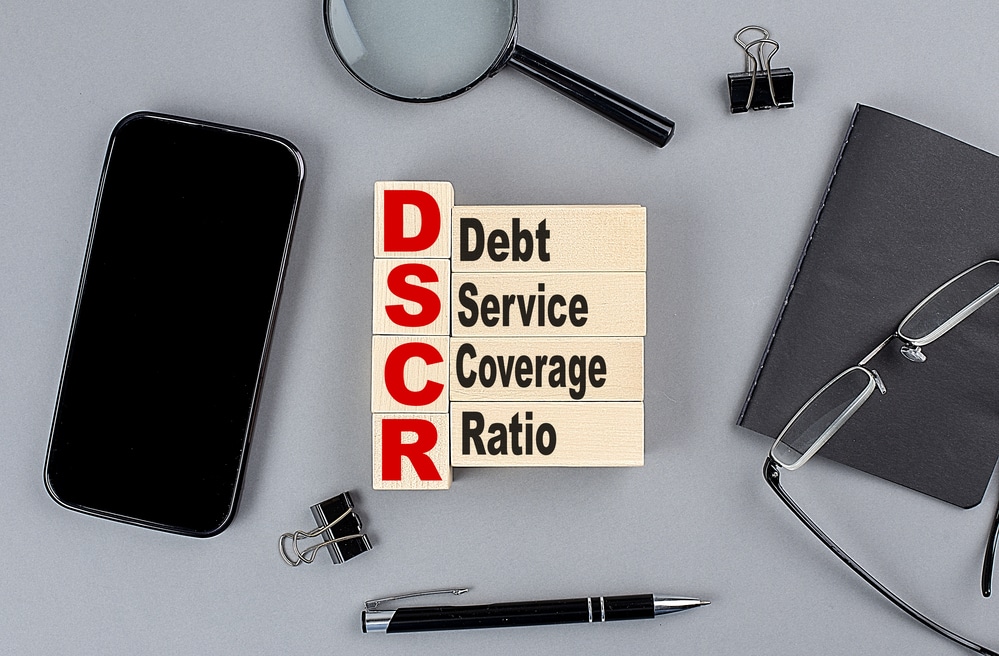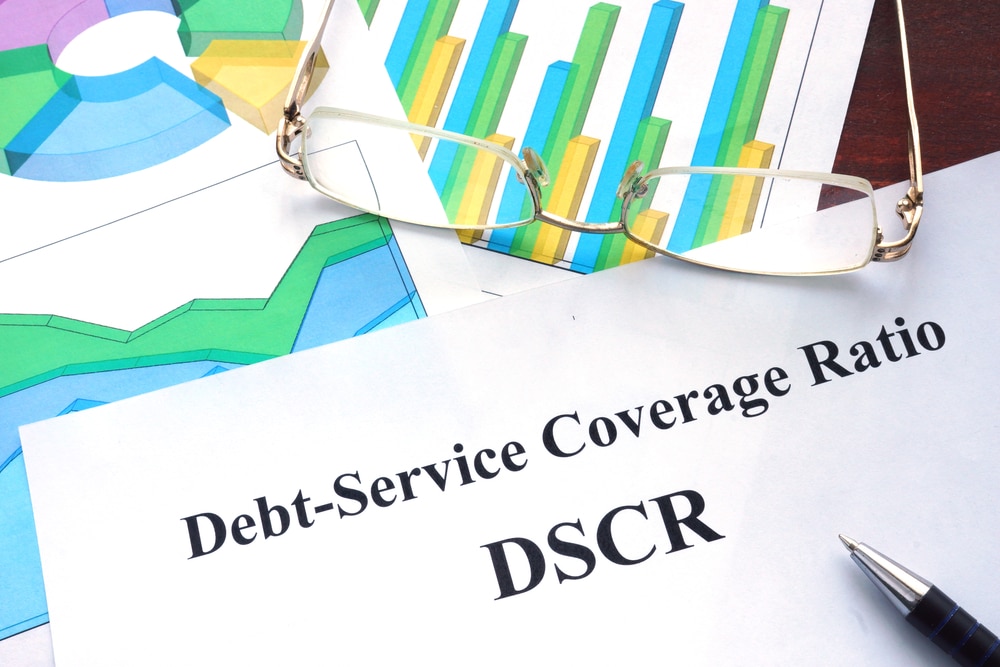Risks of Commercial DSCR Loans: What to Consider Before Applying


Commercial DSCR loans are financial products designed to help businesses obtain the funds they need to grow and expand. DSCR, or debt service coverage ratio, is a measure used by lenders to assess the borrower’s ability to repay the loan.
Although these loans can be an attractive source of financing for businesses, they also come with risks that need to be carefully considered before applying.
 A commercial debt service coverage ratio (DSCR) loan is a type of loan used by businesses to finance commercial properties, such as office buildings and industrial warehouses.
A commercial debt service coverage ratio (DSCR) loan is a type of loan used by businesses to finance commercial properties, such as office buildings and industrial warehouses.
These loans are typically offered by banks and financial institutions and are secured by the property being purchased or refinanced. The DSCR is a metric used by lenders to evaluate the borrower’s ability to repay the loan based on the cash flow generated by the property.
A DSCR of 1.0 means that the property generates enough income to cover the debt service, while a ratio below 1.0 indicates that the property does not generate enough income to cover the debt service.
Lenders typically require a minimum DSCR of 1.20 to approve a commercial DSCR loan, although this may vary depending on the lender and the property type. Commercial DSCR loans are considered a high-risk form of financing, and borrowers should carefully consider the risks before applying.
Default risk refers to the possibility that the borrower will fail to repay the loan as agreed, leading to the lender losing their investment. This risk can be influenced by a number of factors, such as the financial health of the borrower’s business, market volatility, and economic downturns.
One way to mitigate default risk is by thoroughly assessing the borrower’s financials and creditworthiness before approving the loan. It is also important to consider the loan-to-value ratio, as this can impact the lender’s ability to recoup their investment in the event of default.
Additionally, having a solid loan agreement that clearly outlines the terms of repayment and consequences for default can help to minimize the risk of default.
In conclusion, while default risk cannot be completely eliminated, thorough due diligence and risk management strategies can go a long way in minimizing the likelihood and impact of default on commercial DSCR loans.
 Interest rate risk refers to the possibility of changes in interest rates affecting the borrower’s ability to make timely payments.
Interest rate risk refers to the possibility of changes in interest rates affecting the borrower’s ability to make timely payments.
This risk primarily arises from the fact that commercial DSCR loans are typically made with variable interest rates.
Accordingly, when the interest rate environment fluctuates, it can significantly impact the borrower’s financial position.
A rise in interest rates could increase the borrower’s required monthly payments, making them more challenging to meet.
Conversely, a decrease in interest rates could lead to a reduction in required monthly payments, potentially reducing the lender’s return.
This risk presents a significant challenge to borrowers who need to effectively manage cash flows and avoid default on their loans.
Factors such as economic conditions, monetary policy, and inflation rates can all affect interest rates, which may cause fluctuations in payment and repayment terms for commercial DSCR loans.
Market Risk is a crucial element in the assessment of creditworthiness for commercial DSCR loans.
It refers to the financial risks that originate from the conditions of the market that the borrower operates in. These risks are generally influenced by economic and sector-specific factors which affect the overall performance of the borrower’s business.
Some of the primary factors that affect market risk include supply and demand dynamics, competitive pressures, and regulatory changes. In addition, market volatility, fluctuating commodity prices, and currency exchange rates can also exert a strong influence on the borrower’s risk profile.
As a result, lenders commonly assess market risk by conducting comprehensive market analysis and by requiring borrowers to provide regular updates on the market conditions which could affect their ability to generate a consistent cash flow to repay the loan. It is essential for borrowers to carefully analyze and assess these risks before applying for commercial loans.
This can include conducting in-depth analyses of the market dynamics in the borrower’s specific industry, monitoring the performance of competitors, and staying up to date with economic trends and regulatory changes.
By thoroughly investigating these risks, borrowers can make informed decisions about the viability of their business and their ability to manage the additional financial obligations presented by commercial DSCR loans.
 The risk of default on a commercial DSCR loan is closely tied to the collateral risk involved. Collateral risk refers to a situation where the value of the collateral securing a loan drops, making it harder for the borrower to repay the loan. In most commercial DSCR loans, the collateral is the property that the borrower is using the loan to purchase.
The risk of default on a commercial DSCR loan is closely tied to the collateral risk involved. Collateral risk refers to a situation where the value of the collateral securing a loan drops, making it harder for the borrower to repay the loan. In most commercial DSCR loans, the collateral is the property that the borrower is using the loan to purchase.
The value of the property securing a commercial DSCR loan can be affected by several factors such as economic instability, natural disasters, and changes in zoning laws. As such, lenders need to consider the collateral value of any property before approving a loan.
A critical factor that lenders consider is the loan-to-value (LTV) ratio. The LTV ratio is the percentage of the loan amount compared to the value of the property securing the loan.
A low LTV ratio, say 40%, would mean that the lender is giving a loan that is 60% worth of collateral in the event of default.
In contrast, a high LTV ratio would put the lender at risk of not recovering the full loan in events of default or foreclosure of the property. In addition to the LTV ratio, the lenders consider the value of the asset, borrower’s risk profile, and the location of the property.
Prepayment risk refers to the possibility that the borrower will pay off the loan before its due date, which can negatively impact the lender’s returns.
If the borrower pre-pays the loan, the lender loses out on expected interest payments, which could have been made if the borrower had paid the loan according to the agreed-upon schedule.
This can be particularly problematic for lenders, as they often rely on a steady cash flow from interest payments to fund their operations.
If borrowers prepay their loans, it can be challenging for lenders to find new investments with similar returns. If the lender is unable to find new investments, they may be forced to accept lower yields, which can negatively impact their bottom line.
Prepayment risk can also be challenging for borrowers, as they may incur prepayment penalties if they pay off their loans before the agreed-upon date. The prepayment penalty is usually calculated as a percentage of the outstanding balance and can be expensive, especially if the borrower has a large outstanding balance.
Borrowers must consider the potential opportunity cost of prepaying their loans. If interest rates have fallen since the loan was taken out, it may be more profitable for the borrower to invest their funds elsewhere rather than paying off their loan early.
Prepayment risk is an important factor to consider when applying for commercial DSCR loans. Both lenders and borrowers must understand the potential risks and benefits associated with prepayment to make informed decisions about their investments and borrowing strategies.
The refinancing risk is one of the most critical risks that borrowers should consider before applying for a commercial debt service coverage ratio (DSCR) loan.
Refinancing risk is the danger that a borrower will fail to refinance the loan once it matures. This risk arises because commercial DSCR loans typically have a short maturity period of ten years or less.
If the borrower fails to secure a new source of financing before the end of the loan period, they may be forced to default on the loan.
Various factors contribute to the risk of refinancing, including market conditions, interest rates, and the borrower’s creditworthiness.
Inadequate preparation for refinancing is common among many borrowers, leading to high levels of default. To manage refinancing risk, borrowers should carefully monitor their credit rating, financial condition, and market conditions.
Borrowers should also consider seeking the assistance of a financial advisor when preparing to refinance the loan. They should determine the most favorable loan term and interest rates and work to build a track record of reliable debt service. Moreover, it is crucial to avoid overestimating the value of the collateral property and ensure that the property is properly maintained to maintain its value.
Refinancing risk is a significant concern for commercial borrowers when considering a DSCR loan.
Borrowers should take proactive measures to minimize this risk and avoid the costly consequences of default. Working closely with a financial advisor and continuously monitoring relevant factors can help borrowers manage refinancing risk and avoid default.
 Liquidity risk refers to the possibility that a borrower may not have sufficient cash flow or liquid assets to meet their financial obligations under the terms of the loan agreement. This can be due to a range of factors, such as unexpected changes in cash flow, market volatility or economic conditions, or insufficient planning or forecasting by the borrower.
Liquidity risk refers to the possibility that a borrower may not have sufficient cash flow or liquid assets to meet their financial obligations under the terms of the loan agreement. This can be due to a range of factors, such as unexpected changes in cash flow, market volatility or economic conditions, or insufficient planning or forecasting by the borrower.
To mitigate liquidity risk, borrowers should thoroughly assess their ability to meet their repayment obligations and maintain sufficient cash reserves to cover unexpected expenses or market fluctuations.
They may also consider negotiating more flexible loan covenants or including contingency plans in their loan agreement that allow for adjustments in repayment schedules or other terms in the event of unforeseen circumstances.
Additionally, borrowers may seek to establish relationships with multiple lenders or other financial institutions to ensure access to a range of financing options and resources in case of emergencies.
Overall, the key to managing liquidity risk is a comprehensive understanding of a borrower’s financial position and the ability to plan and prepare for a range of potential scenarios.
Through careful analysis, strategic foresight, and proactive risk management strategies, borrowers can minimize the impact of liquidity risk and ensure their long-term financial stability and success.
The operational risk is among the most prominent factors affecting the viability of a commercial DSCR loan.
This risk reflects the likelihood of a borrower facing challenges in executing their operations, which may affect their ability to pay back the loan. One of the significant operational risks is related to management competence.
The ability of managers to oversee business operations effectively, mitigate risks, and make strategic decisions significantly impacts the success of the enterprise.
Incompetent management may result in poor business decisions, operational inefficiencies, and even fraud. This, in turn, may lead to a decline in revenue, reducing the company’s ability to repay outstanding loans. Technology also plays a crucial role in operational risk.
With the increasing use of technology in business operations, companies are becoming more vulnerable to cyber-attacks, system failures, and technology disruptions.
These issues can cause severe damage to a company’s reputation, financial health, and market share. Further, compliance risks are another operational factor that deserves special attention in commercial DSCR loans.
Companies that fail to comply with regulatory standards and guidelines may face hefty fines, lawsuits, and operational disruptions.
Therefore, it is essential to conduct stringent compliance checks to mitigate this risk. Ultimately, understanding the operational risk factors is crucial for both borrowers and lenders.
While borrowers need to monitor their operational risk continuously, lenders must evaluate such risks when considering a commercial DSCR loan application.
Proper due diligence is critical when considering applying for a commercial DSCR loan. It is imperative to thoroughly analyze the borrower’s financial situation and the potential collateral.
Before investing, it is essential to know the risks, both in the short and long term. Factors such as the borrower’s credit score, debt-to-income ratio, and net worth should all be evaluated before granting a loan.
Additionally, it is crucial to take into account the property’s condition, local zoning laws, potential environmental risks, and any current or past legal conflicts.
Engaging professionals such as real estate appraisers, environmental engineers, and attorneys can aid in making informed decisions on the suitability of the loan.
Proper due diligence will help mitigate risks of loan default, foreclosure, and loss of collateral. It is also important to actively review the borrower’s situation regularly, as circumstances can change that affect their ability to service their loan. Continuous monitoring can allow for early detection of any potential default and minimize losses.
In summary, proper due diligence is an essential component of successfully managing risks associated with commercial DSCR loans, and it should be conducted with the utmost thoroughness and diligence.
 Proper risk management strategies are crucial for mitigating potential losses when applying for commercial debt service coverage ratio (DSCR) loans.
Proper risk management strategies are crucial for mitigating potential losses when applying for commercial debt service coverage ratio (DSCR) loans.
Although these loans can offer businesses the capital they need to expand or invest in new opportunities, they can also pose significant risks.
As such, before applying for a DSCR loan, businesses must consider a range of factors and properly manage their risk exposure. One potential risk management strategy is to ensure that the business’s financials are in order before applying for a DSCR loan.
This includes having a clear understanding of the business’s current financial position and projections for the future. Businesses should carefully analyze their cash flow, income statements, and balance sheets to identify any potential weaknesses that may negatively impact their ability to repay the loan.
Additionally, businesses should consider diversifying their portfolio by not relying solely on the DSCR loan to finance their operations.
Another risk management strategy is proper loan structuring, which entails selecting a loan that aligns with the business’s financial goals and cash flow structure.
Loan structuring can help businesses avoid overextending themselves and ensure that the loan is sustainable based on the business’s current financial position.
Hedging strategies can also be employed to protect against potential currency or interest rate fluctuations that could negatively impact the business’s ability to repay the loan. Hedging strategies help businesses mitigate their risk by offsetting the negative impact of adverse market conditions.
Businesses must conduct thorough due diligence to identify and mitigate potential risks associated with the lender. This includes researching the lender’s reputation and track record to determine if they have a history of predatory lending or other unethical practices.
Additionally, businesses should understand the terms and conditions of the loan agreement fully and seek legal advice if necessary to ensure that they fully understand their obligations and rights.
A hedging strategy is a contract put in place to offset potential losses by reducing risk exposure. These strategies are used to protect lenders from the risk of default and reduce the impact of interest rate and currency fluctuations.
Lenders can use hedging strategies to lower the risk profile of their loan portfolios and protect themselves from losses.
One hedging strategy used in commercial lending is interest rate swaps. An interest rate swap is an agreement between two parties to exchange fixed and variable rate interest payments.
This strategy can be used to hedge against rising interest rates, protecting the lender from the possibility of losses. Another hedging strategy is currency hedging, which involves the use of financial instruments to reduce the risk of currency fluctuations.
This is especially important in global markets where loans are made in different currencies than the lender’s base currency.
Loan structuring is an essential aspect of commercial DSCR loans that every applicant must consider before applying. It involves the formulation of a repayment plan that aligns with the borrower’s financial capacity, credit rating, and risk tolerance level.
The lender typically structures the loan to minimize the chance of default and optimize the probability of full repayment.
This goal is achieved by designing a loan that balances the borrower’s debt-to-income ratio (DTI), ensuring that the borrower can meet the debt obligations as they become due.
The DTI ratio is a critical factor that lenders use to assess the borrower’s ability to repay the loan. It is calculated by dividing the borrower’s total debt obligations by their gross monthly income.
The loan structuring process also involves determining the optimal loan term, interest rate, and amortization schedule. The lender uses the borrower’s credit score, financial history, and cash flow projections to set the interest rate, which reflects the perceived risk of lending to that borrower.
The loan term is typically set based on the borrower’s projected cash flows and their business growth potential.
Shorter loan terms attract lower interest rates but higher monthly payments. Longer loan terms offer lower monthly payments but higher interest rates, since the lender has to compensate for the extended credit risk.
The loan structuring process also determines the collateral required to secure the loan. Most commercial DSCR loans require some form of collateral to protect the lender in the event of default.
The collateral can be in the form of real estate, equipment, inventory, or accounts receivables. The lender evaluates the value of the assets pledged and establishes their liquidation value, which serves as the basis for the loan amount. The collateral reduces the lender’s risk and enables them to offer more favorable loan terms to the borrower.
Diversification is an essential risk management strategy that involves spreading investments across different asset classes, industries, or geographical regions.
In the context of commercial DSCR loans, diversification refers to the practice of distributing lending across multiple borrowers or projects to minimize exposure to default risk.
By diversifying their loan portfolio, lenders can reduce the impact of a single default and maintain a healthy level of overall portfolio risk.
Moreover, diversification can help lenders identify and capitalize on emerging market opportunities while simultaneously reducing the risk of concentration in a particular sector or sub-market. To implement a successful diversification strategy, lenders need to carefully evaluate their risk appetite, market conditions, borrower creditworthiness, and portfolio diversification targets.
They should also be mindful of the potential trade-offs between risk and return and develop appropriate tools and models to monitor their portfolio performance.
Overall, diversification can be an effective risk management technique for lenders looking to mitigate the impact of default risk and optimize their loan portfolio returns.
Let Sprint Funding help you navigate commercial DSCR loans with ease.
©2024 Sprint Funding, Inc. All Rights Reserved | NMLS ID: 348300